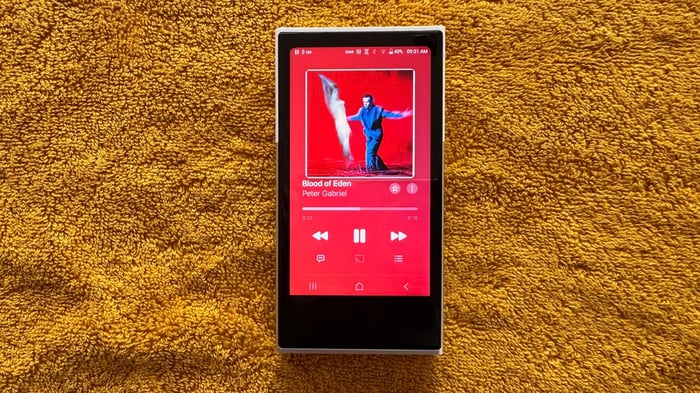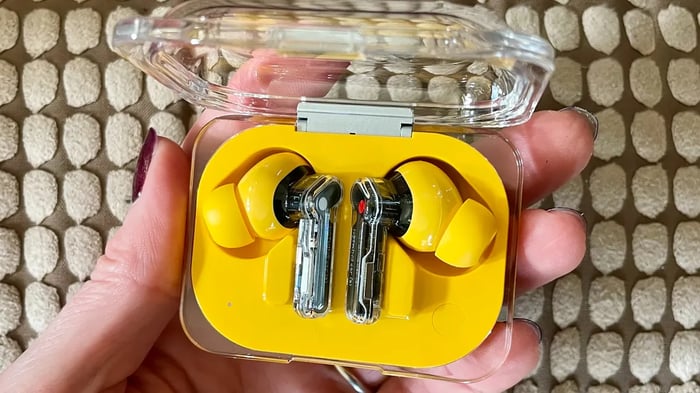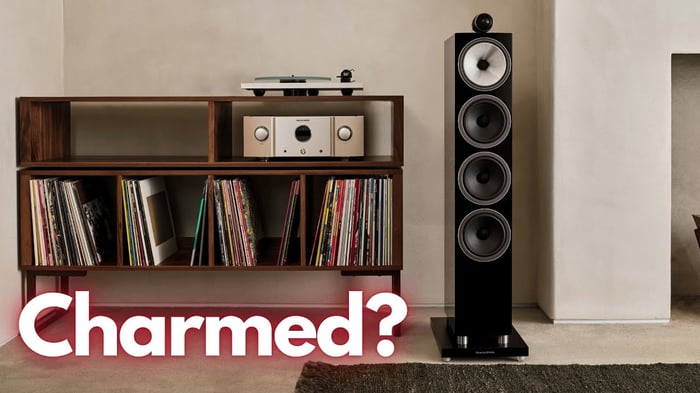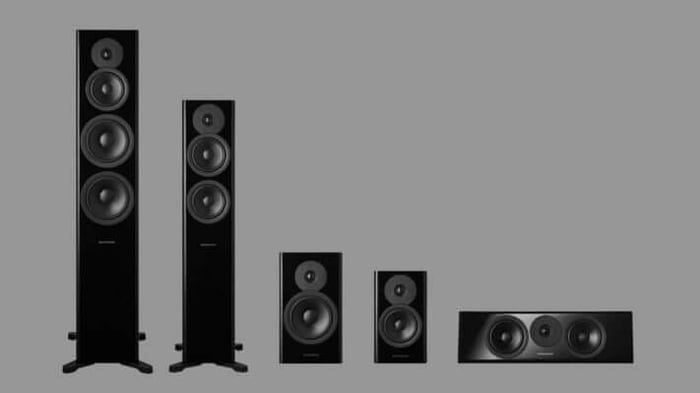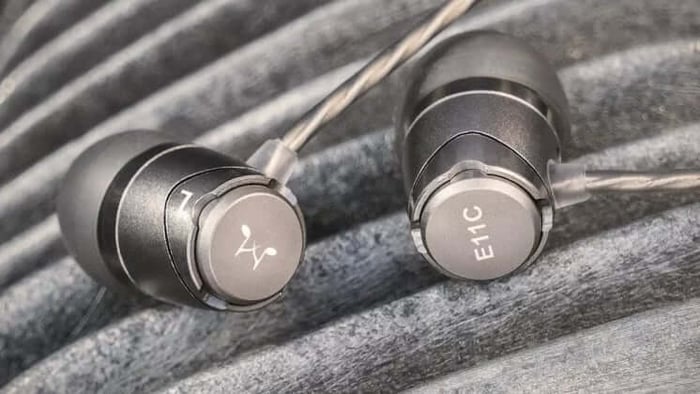
Mini-Disc: The Forgotten Format That Outshined Vinyl
Mini-Disc: The Forgotten Format That Outshined Vinyl
Experience the charm of the mini-disc, a portable music format that once outperformed vinyl and changed the way we listen to music.
Stepping Away from Streaming and Vinyl
Take a moment to set aside your favorite streaming service, forget about the bulky and pricey vinyl revival, and let go of feelings about CDs (and cassettes?). In my opinion, the greatest music format ever created was the mini-disc.
Back in 1992, squeezed chronologically between CD sales surpassing vinyl and the arrival of MP3s, Sony revolutionized portable audio two decades before digital downloads and streaming took over the market. The mini-disc, or "MD" for short, was a bold innovation: a 64-millimeter magneto-optical disc encased in a protective cartridge. Capable of holding up to 80 minutes of CD-quality sound, it was smaller than a stack of sticky notes—and it won my heart.
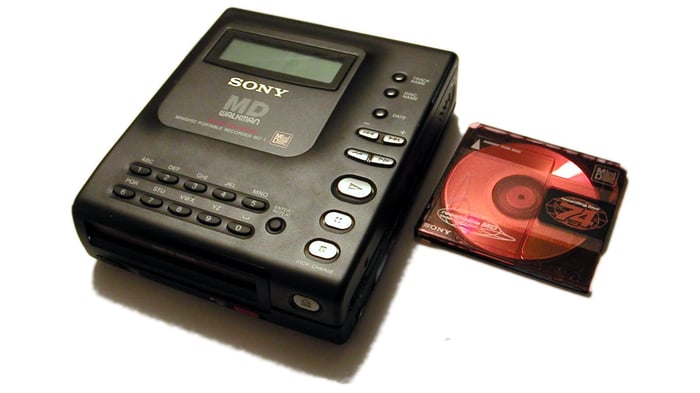
The Magic of ATRAC Compression
Originating from Japan, Sony’s mini-disc used ATRAC (Adaptive Transform Acoustic Coding), a compression algorithm that trimmed data to fit digital audio into a compact form without sacrificing much quality. To my young ears, this was magic—digital clarity without the bulk of CDs, plus the ability to record, edit, and rearrange tracks like a cassette but with precision and speed.
Yes, you could create digital mixtapes, and oh, it was liberating—manually inputting playlist and track names using a joystick dial to appear on the LCD during playback was a delight. You hadn’t lived until you'd found a live drum-and-bass rave recording from an Irish center in Reading on LimeWire and copied it onto one of those sleek little music “notes” from Sony… believe me.
Beyond Sony: An Industry Embrace
It wasn’t just a DIY Sony affair. Just as competing brands churned out blank cassettes and CDs, companies like TDK, JVC, Sharp, and Maxell soon jumped on the mini-disc bandwagon. Major artists like Michael Jackson, Madonna, Mariah Carey, and Massive Attack released pre-recorded albums on mini-discs, proving the format’s mainstream potential.
The tiny size of the mini-disc made it a dream for retailers and music store owners. Why pay for expensive commercial space to stock huge vinyl collections when a newsstand-sized display could hold nearly all the major releases—and a few bootlegs tucked under the counter?
A World of Gadgets and Personal Style
The real fun was in the technology itself. Not only did a new exciting Hi-Fi component appear for your audio rack, but portable players came in all shapes, sizes, and colors, letting you express personality with something that could fit in your back pocket. Car stereos? Absolutely—and you weren’t locked to a single brand.
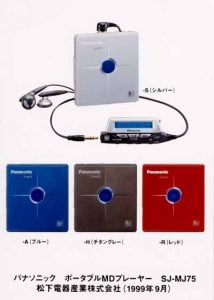
I remember scrimping from Saturday jobs and convincing my dad to buy the most beautiful royal blue Sony MZ-R50 portable audio player on installment from B&B Hi-Fi in Reading. It sat behind glass on the main counter—a moment straight out of a 1994 Wayne’s World scene, but with less hair. Thanks, Dad.
A few years later, my sister, living in Tokyo at the time, brought me a stunning silver Panasonic SJ-MJ75 portable audio player with original Japanese packaging (which instantly made anything cooler). It was half the size of the Sony and barely bigger than the mini-disc itself. Even today, I’m amazed at how light this device was—86 grams, about half the weight of an iPhone 15—thanks to a magnesium alloy case. Its standout feature was a wired remote with a switchable backlight and transparent mode. In 1997, this felt like wizardry. Thanks, sis.
Expanding the Mini-Disc Universe
Unsurprisingly, my mini-disc world quickly grew. I went broke a second time as a teenager by adding a Technics SJ-HD501 deck to my Technics SC-81 mini system, complete with faux wood side panels for extra flair.
My Vauxhall Nova was initially rigged with a secondhand Alpine MDA-7763J car stereo bought from a tough-looking guy in Basingstoke’s rough neighborhood. It soon broke down. No return visits there.
Then I went broke a third time, upgrading to a brand-new Pioneer MEH-9100R car stereo (see video below), featuring an organic OEL display, automatic flip-down front panel, and moving graphics of racing cars—only for the coolest guys.
Digital Optical Cables: A Collector’s Best Friend
A collector’s best buddy was the digital optical cable (TOSLINK), critical for transmitting high-quality digital audio signals without loss between devices, like from a PC sound card to a mini-disc recorder. This preserved original audio quality, unlike analog connections that introduced noise or signal degradation. This was especially vital for home decks and professional recorders to ensure accurate recordings and playback, leveraging the mini-disc’s digital format strengths.
Mini-Disc’s Unique Strengths
The brilliance of the mini-disc lay in its versatility and charm. Unlike CDs, which skipped at the slightest jolt, mini-discs were durable with anti-shock buffers—perfect for on-the-go listening. The discs were rewritable, allowing me to erase old mixes without the finality of CD-Rs or the hiss of tapes. The discs themselves, with colorful cases and mechanical shutters, felt like tiny treasures, and the format inspired creativity. Recording live concerts or radio shows was a breeze, and editing tracks on the fly felt like controlling a studio console. Japanese journalists trusted this format as reliable recorders on solid-state drives well into the 2010s.

The Decline of a Brilliant Format
Yet, despite its genius, the mini-disc failed commercially. Its decline began almost immediately, rooted in poor timing, cost, and competition. In 1992, mini-disc players were expensive—costing thousands—and blank discs were around $7-$14 each, a tough sell when CDs were cheaper and tapes even less expensive.
The real blow came in 1998 with the MP3 revolution. The market saw Diamond Rio PMP300, one of the first portable MP3 players, and by 2001 Apple’s iPod portable audio player redefined portable audio. MP3s were free (if pirated), infinitely shareable, and didn’t need physical media. I initially resisted: MP3 players looked awful, iPods were heavy, and choice overload from thousands of songs felt less satisfying.
While Sony and Sharp aggressively pushed mini-discs in Japan (where they thrived until the 2000s), Western support waned. British retailers like HMV favored MP3 players. The 2004 launch of Hi-MD was a valiant effort but came too late—hard drives and flash memory were cheaper and more convenient. By 2011 Sony stopped making mini-disc players, and in 2013 the last blank discs rolled off the line.

Legacy and Collector Culture Today
Collectors still trade discs on eBay, and Japan’s niche market keeps the format alive. Independent labels and artists release limited mini-disc editions for collectors, often announcing them on Bandcamp or during MiniDisc Day events. But a revival on the scale of CDs, cassettes, or vinyl isn’t in sight.
The mini-disc’s failure wasn’t about quality but ecosystem and timing. Sony’s obsession with proprietary tech alienated users, and the format couldn’t compete with the convenience of file-based audio.
"The mini-disc bridged analog and digital worlds, teaching us that audio can be portable, editable, and high-quality." – Anonymous
Despite its downfall, the mini-disc left an indelible mark. It paved the way for modern streaming culture and playlists—every Spotify mix owes its existence to the magic of mini-disc track editing. Having been there, done that, and yes, bought the T-shirt, my life has been richer for that experience.
What are your thoughts on the mini-disc? Could this format make a comeback in the digital age, or is it destined to remain a nostalgic gem?
FAQs
- How much music can a mini-disc hold?
Up to 80 minutes of CD-quality audio fits on a single mini-disc. - What made mini-discs better than CDs for portable use?
Mini-discs had anti-shock buffers and were much more durable, preventing skipping during movement. - Could you record on mini-discs?
Yes! Mini-discs were rewritable, allowing users to record, edit, and rearrange tracks easily. - Why did the mini-disc fail commercially?
High costs, poor timing, and the rise of MP3 players offering more convenience led to its decline. - Are mini-discs still produced today?
Sony discontinued production in 2013, but niche collectors and independent artists still support the format.
Shop your favorite album cover poster and celebrate the magic of music formats at our store Architect Prints. Bring a piece of music history into your space!
 | DISCOUNTGET 30% OFF*Use code on your next order:
|
* This post may contain affiliate links, meaning we earn a commission if you make a purchase through these links, at no additional cost to you.


